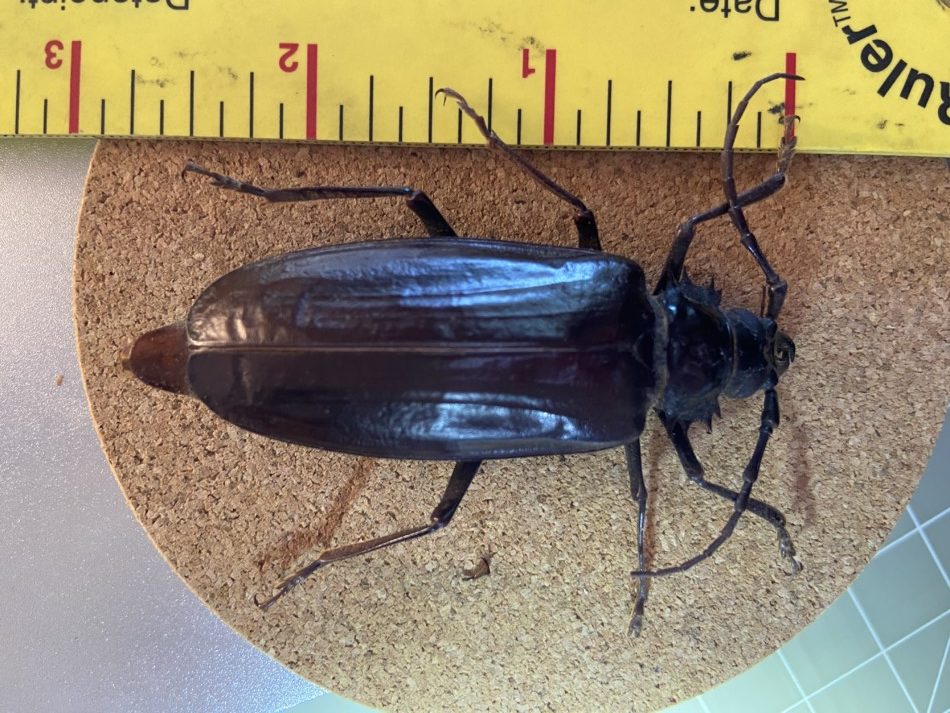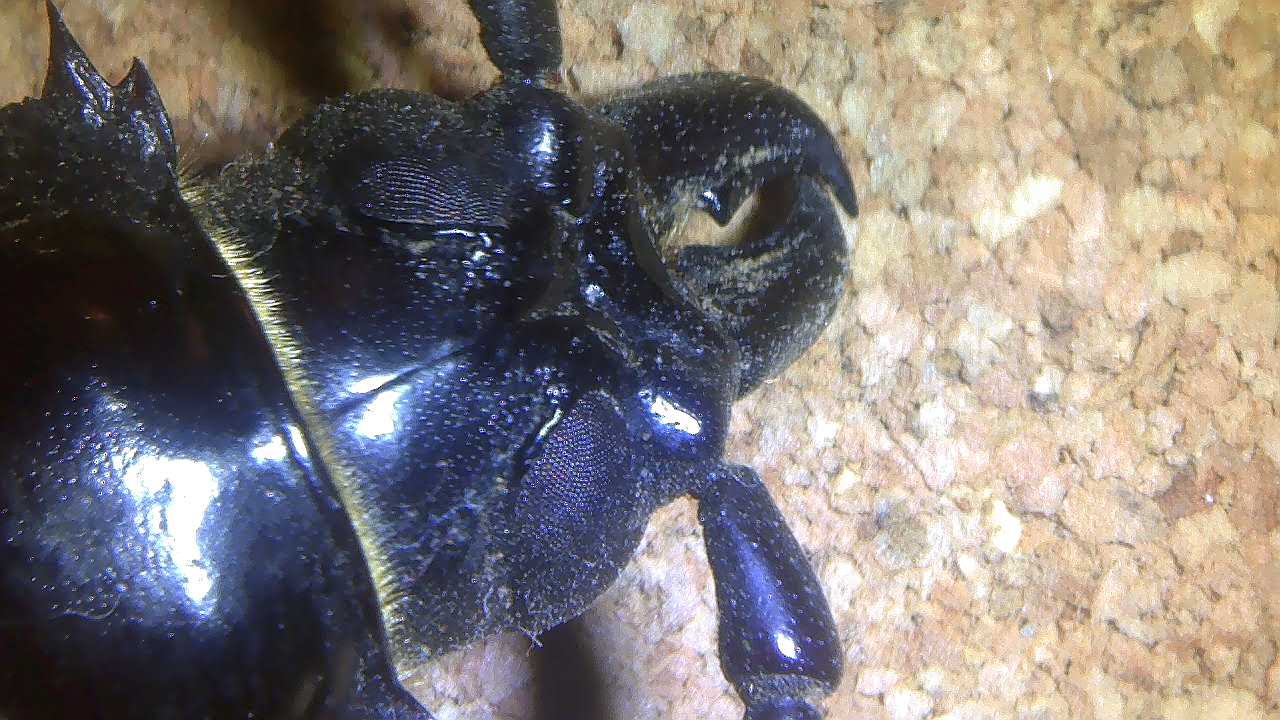In this week’s Microscopic Monday post, we are going to continue to explore the amazing diversity of beetle species in our Sky Island region by focusing on the Palo Verde Root Borer Beetle—also known simply as the palo verde beetle (Derobrachus hovorei).
Formerly classified as Derobrachus geminatus, our local (and quite common) Palo Verde Root Borer was only recognized as a separate species in 2007, when the original type specimen of that name was discovered to be one of our much rarer local species.
Check out the antennae, jaws, wing covers, and spines that help distinguish the palo verde beetle from a cockroach.
Often mistakenly identified as a cockroach due to its shape and size, the black or brown Palo Verde Root Borer can be distinguished from the roaches by its think, segmented antennae (rather than the thin and hair-like filamentous antennae of roaches), large jaws, wing covers that meet along the midline of the body (as opposed to the overlapping wings of cockroaches), and the large spines on its thorax.
Derobrachus hovorei is only really seen in its adult form during the summer monsoon period, and each adult beetle only lives for about a month as they search for mates. There is some question as to whether they even feed as adults or if they simply use up reserves left over from their larval state.
In any case, we do know that their large jaws are mostly used by the males to fight with each other, and to subdue females during mating—which can occasionally even result in the loss of legs and antennae.
Although their powerful jaws can deliver a painful bite if they feel defensive, Palo Verde Root Borers are generally harmless to humans.
After mating, the females will deposit their eggs underground in or near the roots of a palo verde tree, other native tree, or even some non-natives such as rose and olive. Upon hatching, this is where the beetles spend the majority of their lives: three or four years feeding in their larval form!
Although they are often blamed for the death of palo verde trees, it seems unlikely that the larva do much damage as they feed. I say this because they belong to a subfamily of beetles in which most species are known to only eat dead wood (though we don’t know for sure about D. hovorei larvae), but also because they have coexisted with these trees for many thousands of years and we still have both the beetles and the trees, despite nearly all palo verde trees playing host to palo verde beetle larvae!
The abdomen extending well past the wing covers helps to identify this individual as a female. Male’s abdomens are either hidden or just barely peeking out when viewed from above.
If you haven’t yet to see one of these giant beetles (or if you want a good chance of running into one again), your best bet is to leave your porch light on after dark once our summer rains have set in from July through September, since they are attracted to light.
Alternately, you could check around the base of palo verde trees with dead branches (a good indication that they have some dead roots as well) for their quarter-sized emergence holes during these same months. You might even catch one on its way up to the surface, or see a female getting ready to lay her eggs.
References:
Arizona-Sonora Desert Museum. 2008. “Animal Fact Sheet: Palo Verde Root Borer Beetle grub.” Retrieved from Palo Verde Grub Fact Sheet (desertmuseum.org)
Brummermann, Margarethe. 2018. “Does the Palo Verde Rootborer really kill Palo Verde Trees?” [Blog post]. Retrieved from Arizona: Beetles, Bugs, Birds and more: Does the Palo Verde Rootborer really kill Palo Verde Trees?
BugGuide (n.d.). “Species Derobrachus hovorei – Palo Verde Root Borer: Info.” Retrieved January 22, 2021, from Species Derobrachus hovorei – Palo Verde Root Borer – BugGuide.Net
Eaton, Eric R., and Kaufman, Kenn. 2007. Kaufman Field Guide to Insects of North America. New York: Houghton Mifflin Company.
Goforth, C. L. 2011. “Palo Verde Beetles.” [Blog Post]. Retrieved from Palo Verde Beetles | The Dragonfly Woman
Sabino Canyon Volunteer Naturalists (n.d.). “Palo Verde Root Borer.” Retrieved January 22, 2021, from Palo Verde Root Borer (sabinonaturalists.org)



